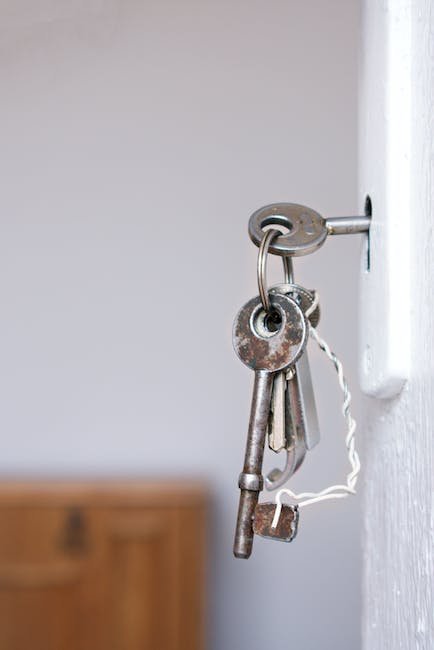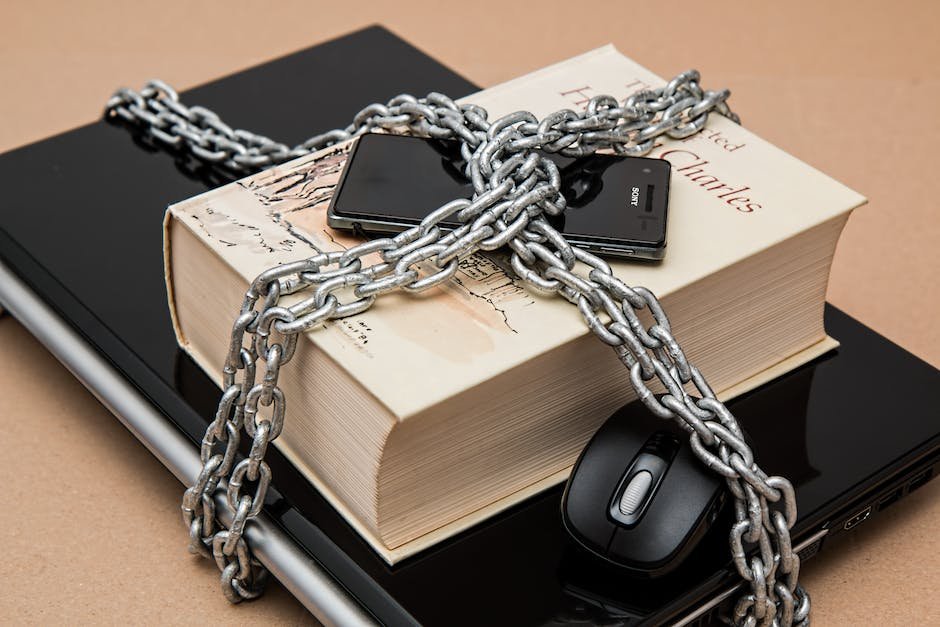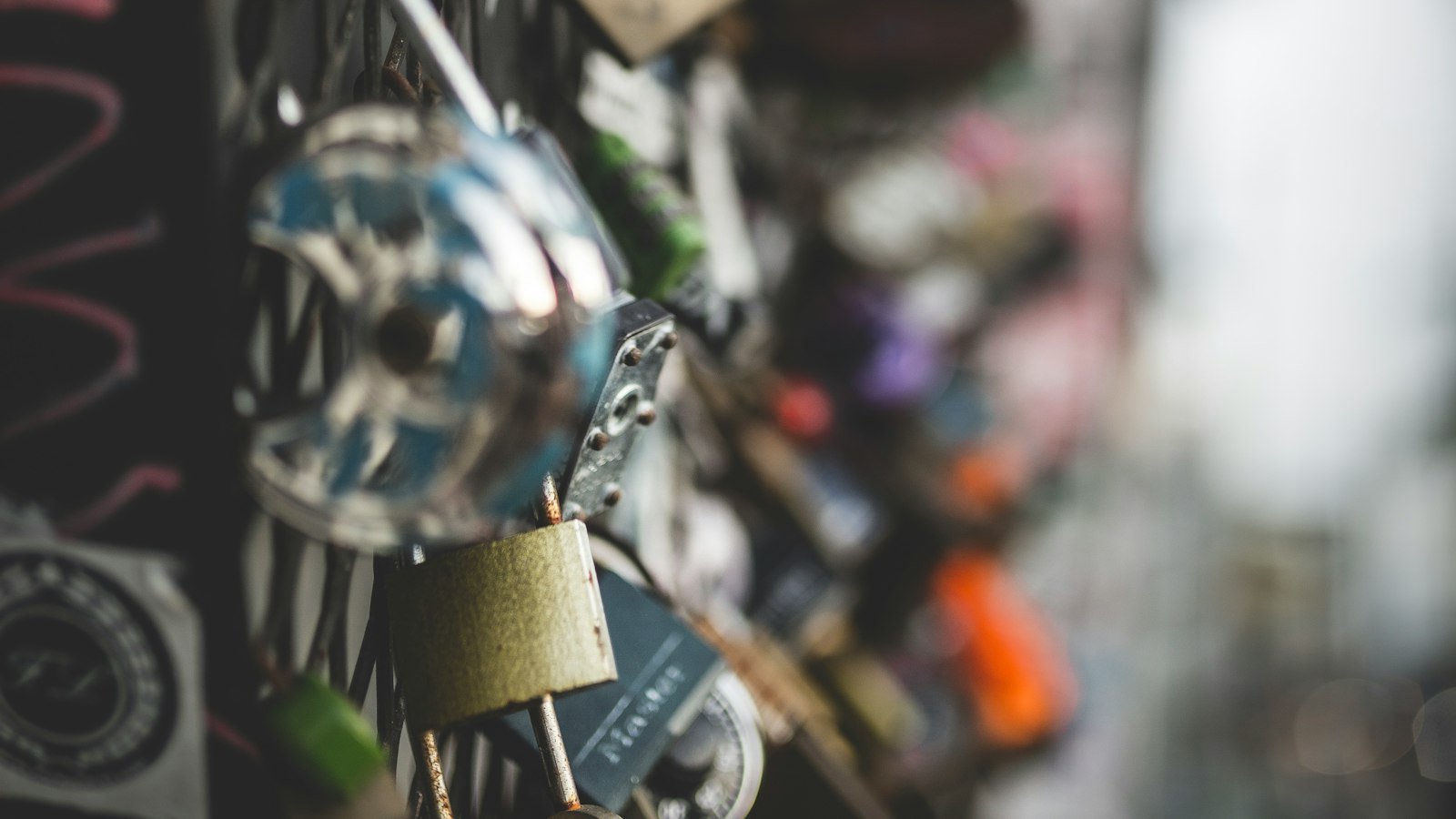Locked away inside a vault, hidden from prying eyes, lies a treasure trove of mysteries waiting to be unraveled—the anatomy of a safe lock. A silent guardian, diligently protecting what is most precious to us, it withstands the relentless advances of time and the ingenuity of would-be thieves. But what truly lies behind the impenetrable façade of a safe lock? What secrets whisper through its intricate mechanisms, ensuring our belongings remain secure? In this exploration, we dive headfirst into the clandestine world of safe locks, unveiling the enigmatic elements that render them impervious to the art of manipulation. Join us on this journey as we navigate the labyrinthine corridors of security, deciphering the codes that make our safe locks impenetrable fortresses.
Table of Contents
- Introduction: Understanding the Anatomy of a Safe Lock
- Layers of Security: Exploring the Key Components
- Breaking Down the Mechanism: How Different Lock Types Work
- Enhancing Security: Advanced Features to Look for in Safe Locks
- Key Recommendations: Choosing a Safe Lock that Provides Maximum Protection
- Q&A
- The Way Forward

Introduction: Understanding the Anatomy of a Safe Lock
Welcome to our comprehensive guide on understanding the anatomy of a safe lock. Whether you’re a locksmith, a security enthusiast, or simply curious about the inner workings of these intricate devices, this post will take you on a journey through the fascinating world of safe locks.
At first glance, a safe lock may appear as just a metal contraption with a dial and a handle, but there’s so much more to it. Let’s delve into the various components that make up a safe lock:
- Dial and Dial Ring: The dial is the prominent circular control that you turn to open the lock. It is typically marked with numbers or symbols. Surrounding the dial is the dial ring, which provides stability and accuracy in combination manipulation.
- Spindle and Drive Cam: When you rotate the dial, it engages with the spindle, a metal rod that connects to the drive cam. The drive cam transfers the motion to the lock bolt system, triggering the opening mechanism.
- Lock Bolt System: This system consists of multiple interlocking bolts that secure the safe. When the correct combination is entered, the lock bolt system disengages, allowing access to the contents inside.
- Glass Relocker: A vital security feature, the glass relocker is a small glass tube filled with sensitive triggering mechanisms. If an attempt is made to force or drill the safe, the glass relocker shatters, activating additional locking mechanisms.
Now that we’ve uncovered a few key components, you’ll soon realize the complexity and precision engineering behind a safe lock. Join us as we explore even further into the intricate world of safe locks and gain a deeper understanding of the mechanisms that safeguard our valuables.

Layers of Security: Exploring the Key Components
In today’s ever-evolving digital landscape, ensuring the security of sensitive data and protecting against cyber threats is paramount. To achieve this, organizations implement multiple layers of security that act as a robust shield against potential breaches. Exploring the key components of these layers will shed light on the intricacies involved in safeguarding vital information.
One crucial component is **network security**, which involves the protection of a company’s internal network from unauthorized access. This can be achieved through firewalls, intrusion detection systems (IDS), and virtual private networks (VPNs). By implementing these measures, organizations can create a secure environment that prevents external threats from infiltrating their network infrastructure.
Another key element is **user authentication**. This entails verifying the identity of individuals accessing the system. Common methods include the use of passwords, biometric data, and two-factor authentication. Strengthening user authentication processes fortifies the system by ensuring that only authorized personnel can access sensitive information, reducing the risk of unauthorized data breaches.
Lastly, **data encryption** plays a vital role in protecting information from unauthorized access. This involves encoding data transmitted between different networks or stored in databases, making it unreadable to anyone without the decryption key. Encryption algorithms create a secure channel that safeguards sensitive data, providing an extra layer of protection against potential attackers.
By carefully implementing these key components, organizations can establish multiple layers of security that work in harmony to protect their data and minimize the risk of cyber threats.
Breaking Down the Mechanism: How Different Lock Types Work
Locks come in various types, each with its own unique mechanism. Understanding how these different lock types work can provide valuable insights into their security features and help us make informed choices. Let’s delve into the workings of some popular lock types and uncover the secrets behind their reliable security.
1. Pin Tumbler Locks: One of the most common lock types, pin tumbler locks operate on the principle of aligning pins to allow the lock to open. Inside the lock cylinder, a series of pins of different lengths are stacked. When the correct key is inserted, it lifts the pins to align perfectly along the shear line, enabling the lock to turn.
2. Disc Detainer Locks: This type of lock employs a series of rotating discs within the lock cylinder. Each disc contains notches or teeth that must align precisely to enable the lock to open. The correct key manipulates these discs by rotating them to the correct positions, allowing the lock to be disengaged.
3. Combination Locks: Unlike key-operated locks, combination locks rely on a specific numeric or alphanumeric sequence to open. Within the lock body, a series of wheels or dials are mounted, each with notches or teeth. When the correct combination is entered by aligning the notches on these wheels, the lock mechanism releases, granting access.
Understanding the intricate mechanisms behind different lock types sheds light on their level of security and effectiveness. Whether it’s the pin tumbler locks with their precise alignment of pins, disc detainer locks with their rotating discs, or combination locks with their secret numeric codes, these mechanisms work in tandem to ensure our belongings remain safe and secure.
Enhancing Security: Advanced Features to Look for in Safe Locks
When it comes to protecting your valuable possessions, a safe is an essential investment. However, not all safes are created equal when it comes to security features. To ensure maximum protection, it is crucial to look for advanced features that can enhance the security of your safe locks.
Biometric Locks: Incorporating cutting-edge technology, biometric locks offer an unmatched level of security. These locks use unique human characteristics, such as fingerprint or retina scanning, to grant access. Without the authorized individual’s physical attributes, the safe remains impenetrable. Biometric locks eliminate the risk of losing or forgetting keys or combination codes, providing quick and convenient access while maintaining optimal security.
Dual Locking Mechanisms: Dual locking mechanisms provide an additional layer of security by employing two different locks. This typically involves combining a traditional combination lock with an additional key lock or a digital lock system. These dual systems not only deter potential intruders but also minimize the risk of unauthorized access. By combining different mechanisms, the chances of a successful break-in are significantly reduced.
Alarm Systems: Integrate advanced alarm systems into your safe to enhance the security measures. These alarms can be programmed to notify you via text message or email in case of any suspicious activity, such as multiple failed access attempts or tampering with the safe’s locking mechanism. The loud alarm sound alone can act as a deterrent, discouraging burglars from attempting to break in.
Key Recommendations: Choosing a Safe Lock that Provides Maximum Protection
When it comes to safeguarding your valuables, choosing the right lock is of paramount importance. Here are some key recommendations that will help you select a safe lock that provides maximum protection:
- Consider the lock type: Various types of locks are available, ranging from traditional key locks to advanced electronic locks. Assess your specific needs and choose a lock type that aligns with your security requirements.
- Opt for a reputable brand: Ensure you select a lock from a well-established and trusted brand. A reputable brand will provide assurance of quality craftsmanship and reliability.
- Evaluate the lock’s resistance: Look for locks that offer exceptional resistance against common security vulnerabilities such as picking, drilling, and manipulation. Check for features like hardened steel components and anti-tamper mechanisms.
- Consider ease of use: No matter how secure a lock may be, it is essential to choose one that is user-friendly and suits your preferences. Look for features like smooth operation, ergonomic design, and clear instructions for setting or changing combinations.
- Seek professional advice: If you are unsure about the best lock option for your specific requirements, consult with a professional locksmith. They possess the expertise to guide you through the vast array of choices available.
By following these key recommendations, you can ensure that you choose a safe lock that not only provides maximum protection but also meets your individual needs. Remember, investing in a high-quality lock is a small price to pay for the peace of mind and security it offers.
Q&A
What are the essential components of a safe lock?
A safe lock typically consists of a combination dial or keypad, a bolt mechanism, and a locking mechanism. These components work together to provide a secure and reliable way to protect valuables.
How does a combination dial or keypad contribute to the security of a safe lock?
A combination dial or keypad adds an extra layer of security by requiring the correct sequence of numbers or characters to unlock the safe. This reduces the likelihood of someone guessing the code and gaining unauthorized access.
What role does the bolt mechanism play in ensuring the security of a safe lock?
The bolt mechanism is responsible for securing the safe door by extending or retracting a bolt when the correct code is entered. It is designed to withstand considerable force or tampering, making it difficult for intruders to break in.
What is the purpose of the locking mechanism in a safe lock?
The locking mechanism ensures that the bolt remains in its extended position, preventing the door from being opened unless the correct code is entered. It adds an extra layer of protection to the safe, preventing it from being easily compromised.
How do modern safe locks incorporate advanced technologies?
Modern safe locks often incorporate advanced technologies such as biometric scanning, digital encryption, or remote access control. These technologies enhance security by adding additional layers of authentication or by enabling remote monitoring and management.
What are some common methods used to protect safe locks from manipulation?
Manufacturers use various methods to protect safe locks from manipulation, such as anti-drilling plates, relocking devices, or sensors that detect tampering attempts. These precautions make it extremely difficult for unauthorized individuals to bypass the lock’s security.
Can safe locks be vulnerable to lock-picking?
While no lock is completely impervious to lock-picking, high-quality safe locks incorporate complex key cylinders or digital encryption systems that significantly increase the difficulty of picking. Skilled lock-pickers would face a formidable challenge trying to bypass such locks.
Are there any certifications or standards that ensure the security of safe locks?
Yes, various independent organizations, such as Underwriters Laboratories (UL), evaluate and certify the security of safe locks. These certifications provide assurance that the locks meet certain industry standards and have undergone rigorous testing to ensure their effectiveness.
What should individuals consider when choosing a safe lock for their needs?
When choosing a safe lock, individuals should consider factors such as the level of security required, the type of valuables being protected, and any specific features or technologies they prefer. Consulting with a security professional can help in selecting the most suitable lock for specific needs.
The Way Forward
As we conclude our journey through the labyrinthine world of safe locks, one thing becomes abundantly clear: the anatomy of a secure lock is no ordinary occurrence. From the intricate mechanisms that guard our most prized possessions to the unwavering dedication of locksmiths worldwide, the realm of safe locks is a testament to the artistry and science intertwined within our security.
Just like a maestro who relentlessly fine-tunes his masterpiece, a secure lock is a symphony meticulously composed. Each component harmonizes with precision, playing its part in safeguarding what we hold dear. From the robust steel body that shrouds the secrets within, to the unyielding bolts that stand as silent guardians, the anatomy of a safe lock is a complex ensemble. No detail is accidental; every aspect has been carefully designed to dissuade even the most tenacious of adversaries.
But beneath the surface of steel and bolts, lies an unwavering dedication to security. The creative minds behind these masterpieces have a singular goal in mind: to ensure that what is meant to be protected remains impervious to the probing hands of intruders. Years of research, innovation, and adaptation culminate in locks that push the boundaries of possibility, staying a step ahead of evolving threats.
With each new lock design, the unwavering passion of locksmiths and security experts shines through. It is their unrelenting dedication that propels the evolution of safe locks, transforming them from rudimentary mechanisms into formidable fortresses. Through countless hours of trial and error, their craftsmanship has elevated security to an art form, blending knowledge and ingenuity into an awe-inspiring manifestation of safety.
As we reemerge from the intricate world of safe locks, we are left with a profound appreciation for the interconnectedness of creativity and security. It is a domain where the ethereal realm of imagination merges seamlessly with the tangible world of protection. So next time you gaze at a safe lock, take a moment to admire the invisible hands that have crafted its impenetrable essence. These guardians of our treasures, both tangible and intangible, embody the craftsmanship and artistry that lie at the heart of our quest for security.
As an affiliate, my content may feature links to products I personally use and recommend. By taking action, like subscribing or making a purchase, you’ll be supporting my work and fueling my taco cravings at the same time. Win-win, right?
Want to read more? Check out our Affiliate Disclosure page.